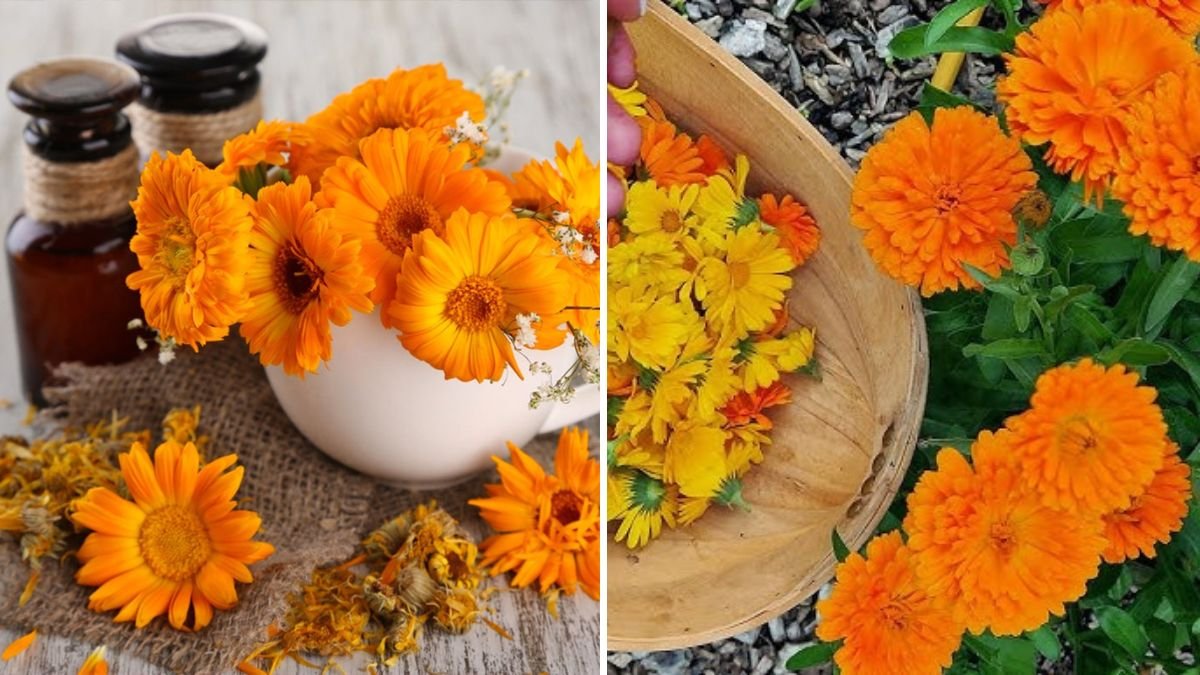Calendula (Calendula officinalis), commonly known as pot marigold, is a vibrant, medicinal, and culinary herb prized for its bright yellow and orange flowers. Known for its soothing and healing properties, calendula is often used in teas, salves, tinctures, and skin-care remedies. Harvesting calendula correctly ensures that the flowers retain their therapeutic qualities, vibrant color, and aroma, providing maximum benefits for both culinary and medicinal uses. This article provides a comprehensive guide on harvesting calendula for teas and salves, including selection, timing, harvesting techniques, drying, storage, and preparation methods.
Why Harvest Calendula?
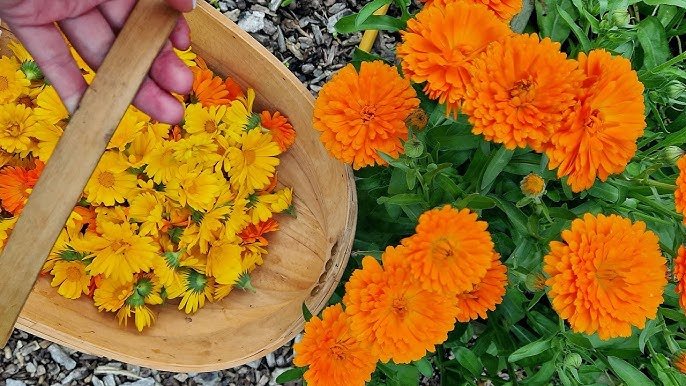
Calendula is a versatile herb with numerous benefits:
- Medicinal Uses: Calendula flowers contain anti-inflammatory, antifungal, and antibacterial compounds, making them ideal for skin salves and soothing teas.
- Culinary Uses: Adds color, mild flavor, and nutrition to salads, soups, and herbal teas.
- Home Remedies: Calendula is often used in balms, salves, and infused oils to treat minor cuts, burns, and skin irritations.
- Sustainability: Home harvesting reduces dependence on store-bought dried flowers and ensures freshness and purity.
- Economic and Educational Value: Growing and harvesting calendula can be a cost-effective way to produce herbal remedies while learning about plant life cycles.
Step 1: Selecting the Right Calendula Plants
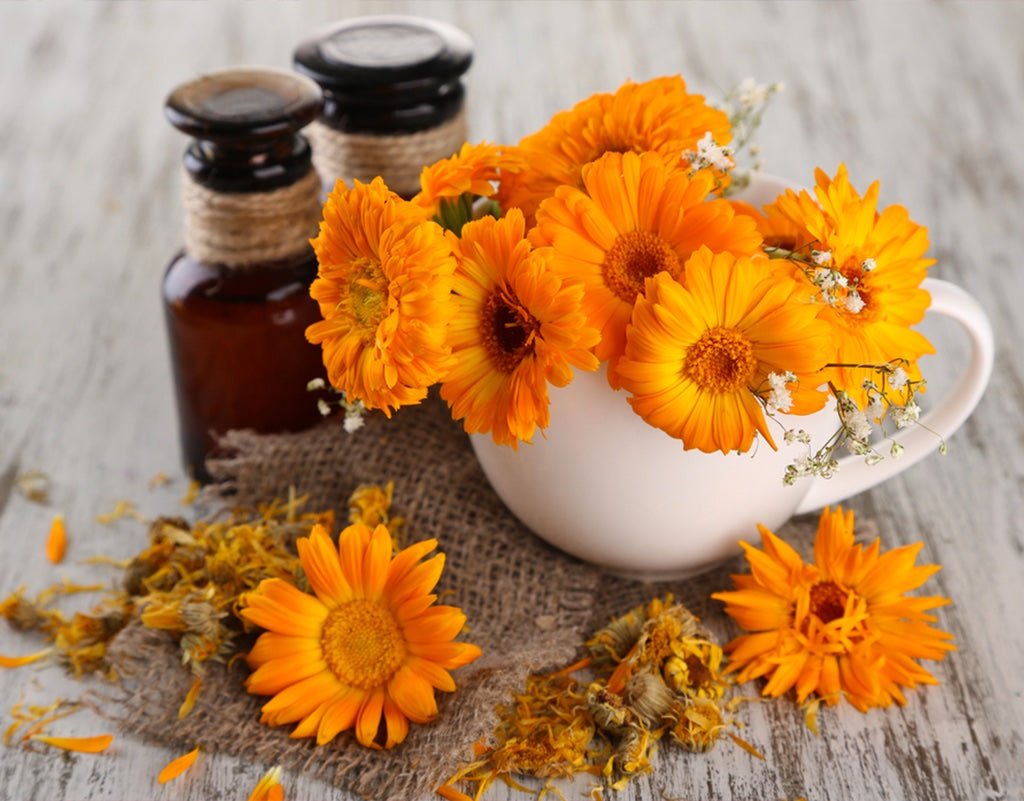
The quality of harvested flowers starts with selecting healthy plants:
Traits to Consider:
- Healthy Growth: Choose plants free from pests, diseases, and discoloration.
- Vibrant Blooms: Look for large, brightly colored yellow, gold, or orange flowers.
- Continuous Flowering: Select plants that produce multiple blooms for an extended harvest season.
- Open-Pollinated Varieties: Ideal for seed saving if you wish to continue growing calendula in subsequent years.
Tip: Ensure your calendula garden is in full sun with well-draining soil to maximize flower production.
Step 2: Understanding Calendula Flower Development
Knowing the right stage to harvest ensures maximum potency and color retention:
Flower Maturity:
- Calendula flowers are at peak potency when fully open but not over-mature.
- Petals should be vibrant, firm, and free from wilting.
- Avoid harvesting flowers with signs of damage, disease, or browning petals.
Timing:
- Harvesting is best done in the morning after the dew has evaporated, when essential oils and active compounds are most concentrated.
- Regular harvesting encourages further blooming throughout the season.
Step 3: Tools and Preparation for Harvest
Gather the necessary tools and materials for a smooth harvesting process:
- Sharp scissors or garden shears: For cleanly cutting flower heads without damaging the plant.
- Baskets or paper bags: To collect flowers gently without crushing petals.
- Gloves (optional): Protect hands from rough stems or sap.
- Drying racks or trays: Prepare a ventilated area for air drying.
Tip: Avoid plastic bags for collection, as they can trap moisture and cause flowers to mold.
Step 4: Harvesting Calendula Flowers
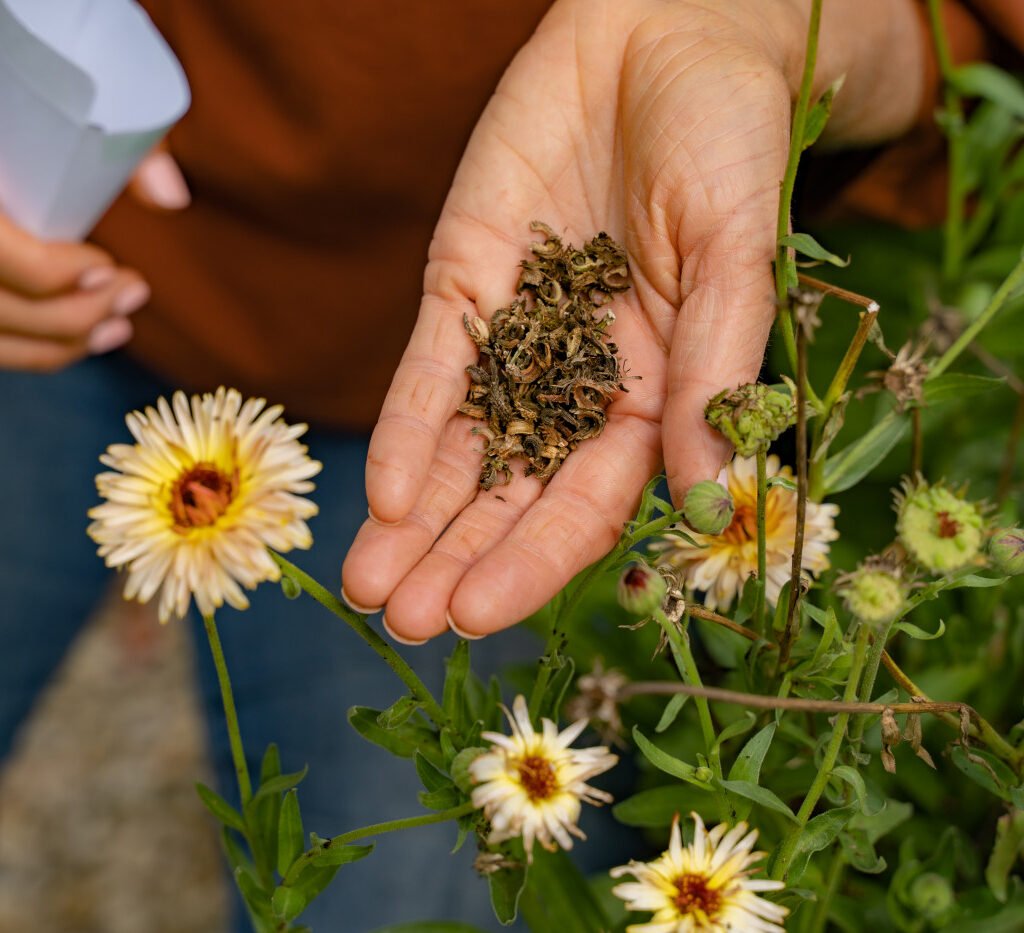
Proper technique ensures flowers retain their color, aroma, and medicinal properties:
Step 1: Cutting the Flowers
- Cut the flower head with 1–2 inches of stem attached.
- Handle flowers gently to avoid bruising or tearing petals.
Step 2: Sorting and Quality Control
- Remove damaged, wilted, or insect-affected blooms.
- Use only firm, vibrant flowers for teas and salves to maximize potency and visual appeal.
Step 5: Drying Calendula Flowers
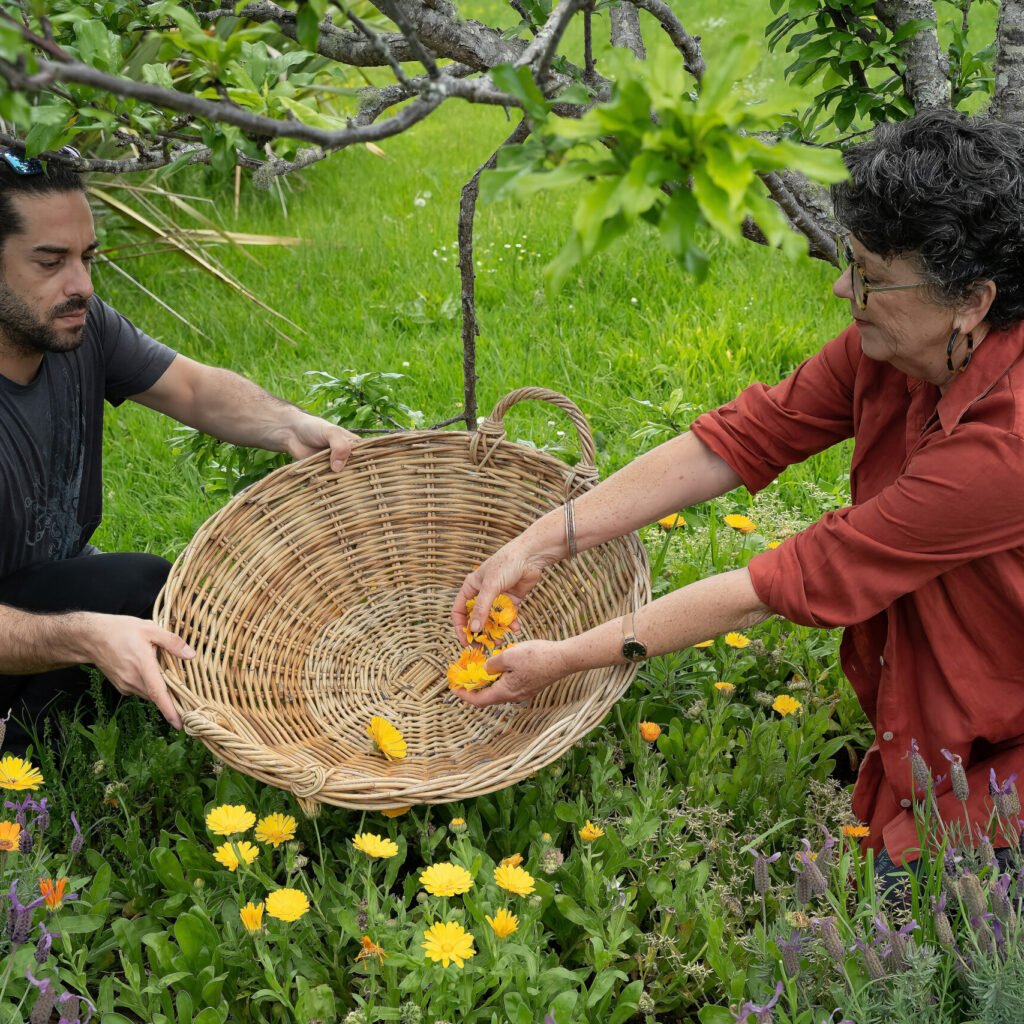
Drying is crucial to preserve calendula’s color, flavor, and medicinal properties:
Air Drying:
- Spread flowers in a single layer on a drying rack, tray, or screen.
- Keep in a cool, dark, well-ventilated area away from direct sunlight.
- Drying usually takes 1–2 weeks, depending on humidity.
- Turn flowers occasionally for even drying.
Alternative Drying:
- Hang small bundles upside down in a dark, ventilated area.
- Ensure good airflow to prevent mold and discoloration.
Tip: Flowers are ready for storage when petals are crisp, dry to the touch, and stems snap easily.
Step 6: Storing Dried Calendula Flowers
Proper storage maintains freshness and medicinal properties:
Storage Containers:
- Glass jars with airtight lids
- Paper envelopes or cloth bags for short-term storage
- Avoid plastic containers unless airtight and moisture-free
Storage Conditions:
- Cool, dark, and dry location
- Avoid humidity and temperature fluctuations
- Label containers with harvest date and variety for easy tracking
Tip: Dried calendula flowers can retain their potency for up to one year when stored correctly.
Step 7: Using Calendula Flowers in Teas
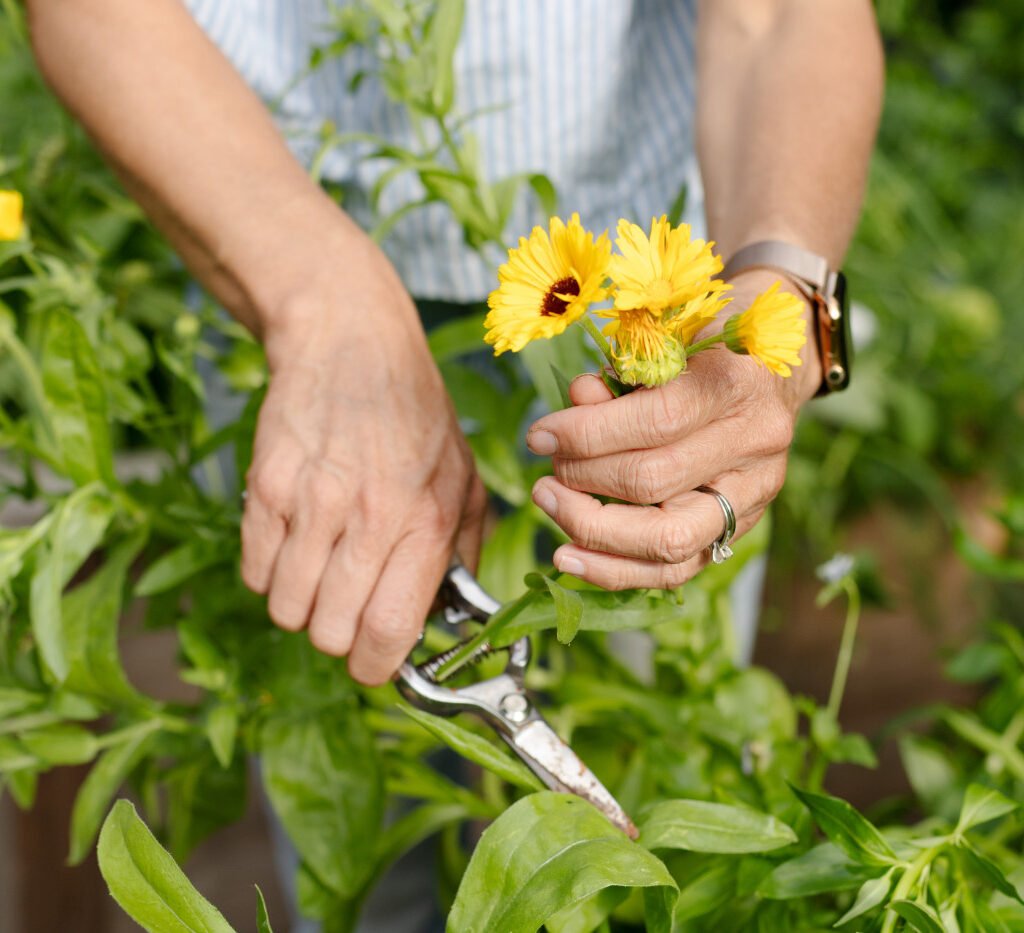
Calendula teas are soothing, anti-inflammatory, and aromatic:
Step 1: Preparation
- Use 1–2 teaspoons of dried petals per cup of hot water.
- Steep for 5–10 minutes, depending on desired strength.
- Strain flowers before drinking.
Health Benefits:
- Calendula tea may aid digestion, soothe sore throats, and provide mild anti-inflammatory effects.
- Combining with herbs like chamomile, mint, or lemon balm can enhance flavor and medicinal properties.
Step 8: Using Calendula Flowers in Salves
Calendula-infused oils are the base for medicinal salves:
Step 1: Making Calendula Oil
- Place dried or fresh petals in a jar with a carrier oil such as olive or almond oil.
- Infuse using a slow heat method (double boiler or sun-infused) for 2–6 weeks.
- Strain petals to obtain a golden, aromatic calendula oil.
Step 2: Making Salve
- Combine infused oil with beeswax in a 4:1 ratio (oil:beeswax).
- Melt gently, stir, and pour into containers.
- Let solidify to create a healing salve for cuts, burns, and dry skin.
Tip: Store salves in cool, dark places to maintain effectiveness.
Step 9: Tips for Continuous Calendula Harvest
- Succession Planting: Sow seeds every 2–3 weeks to ensure a continuous bloom and harvest.
- Deadhead Regularly: Encourage more flowers and prolonged harvesting season.
- Avoid Chemical Sprays: Ensure flowers are pesticide-free if used for teas or salves.
- Record Keeping: Track bloom times, flower size, and oil/salve yields for future planning.
- Companion Planting: Plant near vegetables or herbs to attract pollinators and support garden health.
Advantages of Harvesting Calendula for Teas and Salves
- Medicinal and Culinary Uses: Provides a natural remedy for skin ailments and soothing herbal teas.
- Visual Appeal: Bright orange and yellow petals enhance aesthetic value in dishes and remedies.
- Cost-Effective: Reduces dependence on store-bought herbal products.
- Sustainable Gardening: Supports home-grown, eco-friendly practices.
- Year-Round Benefits: Dried petals can be stored for use during winter months when fresh flowers are unavailable.
Conclusion
Harvesting calendula for teas and salves is a rewarding practice that combines gardening, culinary arts, and herbal medicine. By selecting healthy plants, harvesting flowers at peak maturity, drying properly, and storing under optimal conditions, gardeners can maximize the therapeutic and culinary potential of calendula. Using calendula in teas, infused oils, and salves not only enhances health and wellness but also brings vibrant color, aroma, and flavor to everyday life. With careful attention and sustainable practices, calendula can become a versatile and cherished addition to any home garden, providing both beauty and practical benefits throughout the year.
